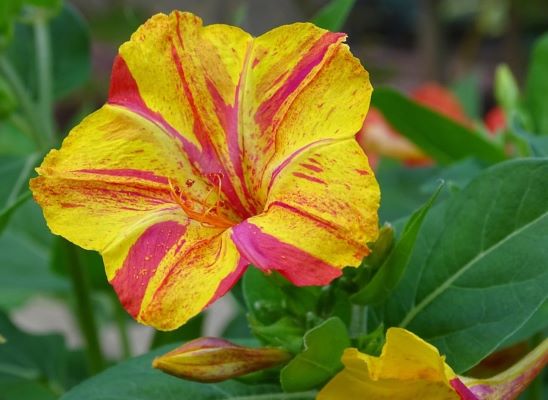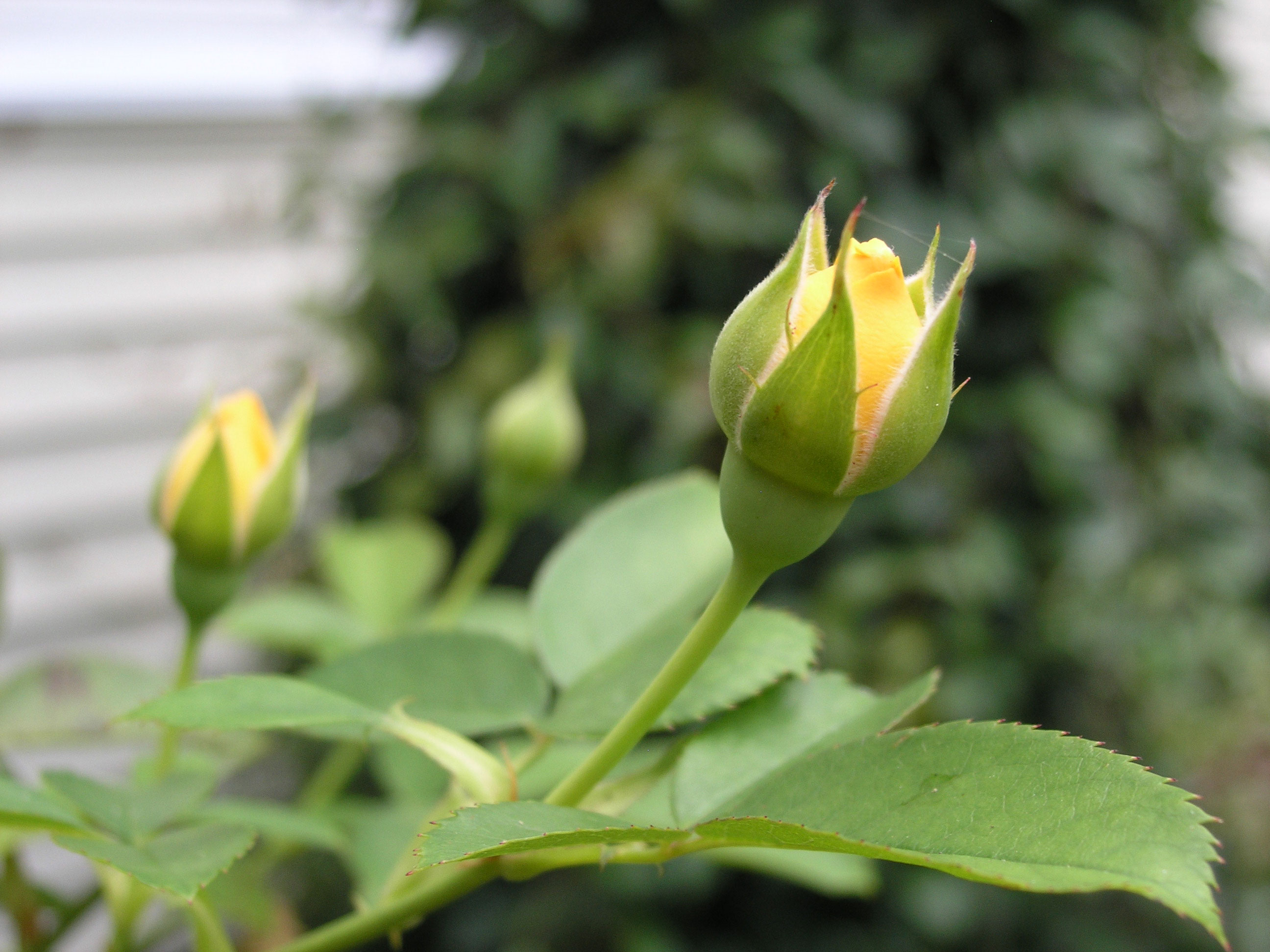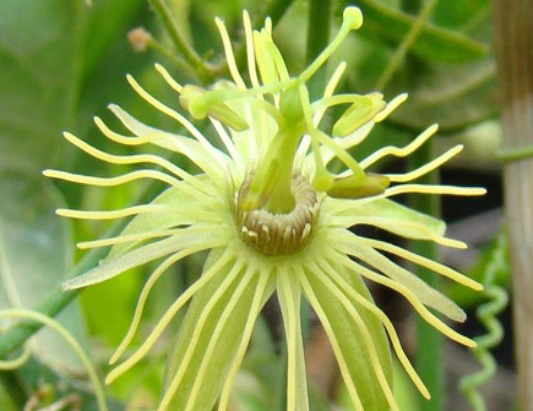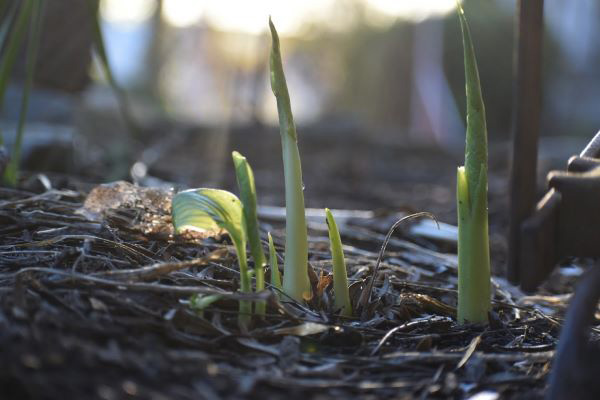Fragrant Annuals and Perennials
Few experiences rival the joy of strolling through a garden bursting with sweet scents that tantalize the senses. Fragrant plants add an extra dimension to any outdoor space, transforming it into a haven of sensory delight. Whether you're a seasoned gardener or just starting out, incorporating fragrant plants into your garden can be a rewarding endeavor. This week we're offering a guide to the best annuals and perennials for creating an olfactory oasis in your backyard. We'll follow up in future weeks with more ideas for shrubs, trees, vines, and tropicals.

Adding Fragrant Plants to your Garden
Fragrant plants can find a place in your garden almost anywhere. They can be grown in sun or shade, in the ground or in a container, and at any level from groundcover to large tree. Many fragrant plants have showy blossoms that will only scent the air while in bloom, while others are grown for their longer lasting scented foliage. Some flowers may be more fragrant after dusk to attract night-flying pollinators. Think first about where and when you spend the most time in your garden to maximize the aromatic experience .
Then, determine what may be missing from your garden, or what might be further enhanced. If the majority of your plantings are 3 feet or under, a fragrant flowering vine on a tall pillar or arch will add further dimension, for example.
If your planting space is minimal you might grow scented herbs and sweet flowering annuals in a container on your patio. Try them in a hanging basket placed on a shepherd's hook, for easy "nose access."
Read on to find our best suggestions to bring a heavenly fragrance to your garden with annuals and perennials.

Fragrant Annuals
1.Moonflower vine (Ipomoea alba):
· 4 to 5 inch white fragrant flowers that bloom at dusk
· Full sun and regular watering for best performance
· Twining vine. Can be grown in a large container on a shepherd's hook, trellis, obelisk, even up and over a fence with a little help to get it started.
· Can be easily grown from seed and seeds can be saved from year to year.
· To start indoors, nick seedcoat and place between layers of wet paper towelling. Once sprouted, plant in coco fiber pot or other plantable pot to minimize root disturbance. Pinch occasionally to promote a bushier plant. Plant outside once all danger of frost is past.
· Fertilize lightly--too much nitrogen will promote foliage at the expense of blooming
· Beautiful for a moonlight or evening garden
2. Nemesia :
· Small, orchid-like flowers in many colors and bi-colors
· Suffers in summer heat and humidity, but more heat-tolerant varieties are being bred
· Most commonly found cultivars are loosely upright and 12 to 16 inches high
· 'Aromatica True Blue,' with pale blue blooms is one of the most fragrant
· Full sun, with afternoon shade beneficial in warm climates
· Shearing is easier than dead-heading
· Keep moist, but don't overwater. Watch for stem rot, especially in thickly planted containers where air circulation is limited
· Some species are tender perennials that may overwinter in zones 9-10.
3. Petunias:
· Most petunias bred today lack the fragrance of old-fashioned cultivars, so you might need to grow your own from seed
· Petunia hybrids with P. axillaris in their heritage will tend to be more fragrant, as will blue and purple types; often this is more pronounced at night
· These petunias are reported to be especially fragrant: 'Rainmaster,' 'Old-Fashioned Climbing/Vining,' Evening Scentsation,' 'Blue Storm,' 'Madness Plum Crazy,' 'Prism Sunshine' white or yellow.
· Petunias are very susceptible to phytopthora crown rot. The plant will rot at the stem line and die, but the roots will appear completely healthy. Never plant petunias where this issue has occurred previously. Overwatering, especially via irrigation systems, must be avoided at all costs.
· Petunias (and related calibrachoa, or million bells) prefer a PH below 6 and higher levels may prevent their uptake of iron (watering with city water which is usually alkaline can contribute to this). Watch for iron chlorosis, or yellowing of leaves with veins remaining green, usually newer leaves first. Try using a feed specifially for petunias if this becomes an issue.
4. Sweet Alyssum (Lobularia spp):
· Small clusters of sweet-scented tiny purple, pink, or white flowers cover the low-growing plant
· Suffers in hot and humid summer climates
· Flowers are too small to deadhead, so plant should be sheared before it goes to seed to keep it blooming
· Charming mixed with lettuces, pansies & violas, and other cool-weather plants in borders or containers, adding a delicate texture
5. Heliotrope:
· Large purple flower clusters throughout summer with crinkled deep green foliage
· Common name of "cherry pie," but smells like vanilla. Some varieties are bred for improved performance and may not be as strongly scented. 'Fragrant Delight,' 'Marine' or 'Deep Marine,' and alba (with white flowers) are recommended
· Full sun to light shade in hot & humid summers; regular water and fertilizer
· Smell before you buy--some cultivars have been bred for better garden performance but may not be as intensely fragrant
· Can be grown in a container and overwintered inside with adequate light. Hardy in and south of zone 8, and in urban heat zones in zone 7
6. Nicotiana:
· Most garden center cultivars have white, yellow, light to deep pink, or purple 1.5" long trumpet shaped flowers on 12 to 18 inch plants
· The larger "flowering tobacco" N. sylvestris is the most fragrant, but is a much larger plant, up to 3-5 feet! This can be grown from seed.
· Full sun to light shade
7. Four O'Clocks (Mirabilis jalapa):
· Rarely found as plants, but easily grown from seed
· Fragrant trumpet-shaped blooms 2 inches long and 1 inch wide in shades of pink, white, red, and yellow cover the bushy 2-3' plants through fall
· Flowers open late in the day, last only one day and do not self-shed
· Can reseed; also forms tuberous roots that can be dug and replanted like dahlias.
· Tender perennial zones 8 and south, possibly zone 7 as well
8. Ornamental Sweet Peas (Lathyrus odoratus):
· Beautiful flowers, showy, yet delicate in appearance, in practically any color and bicolors, on long twining vines
· Fragrance has been variably described as reminiscent of grapes, honey, orange blossoms and jasmine.
· Full sun to light shade with a neutral to alkaline PH. Cooler temperatures generally preferred, so some afternoon shade in the south will be required
· If plants are not available in your location, can grow from seed. Seedlings can tolerate light frost.
· Start seeds indoors 4-6 weeks before last frost date, planting outside 2 wks before average last frost date
· Soak seeds for 24 hours before sowing or nick seed coat to promote germination. May be slow to germinate.
· Pinch seedlings when 4-6 inches high to promote side shoots
· Needs support to grow--netting, fence, trellis, etc. Climbs via use of small twining tendrils on stems.
· Needs fertile soil and cool roots--add compost when planting and mulch well
9. Scented Geraniums (Pelargonium spp):
· Fascinating group of plants to grow, as there are myriad varieties with fabulously scented foliage. Fragrances include nutmeg, rose, lemon rose, rose mint, lemon, lime, orange, coconut, peppermint, chocolate mint, apple, ginger......the list goes on. Most frequently found will be P. 'Citrosa,' the famous "Mosquito Plant." With a strong lemony, citronella fragrance, it has become popular as a mosquito fighter. I don't know how well it works just sitting in the yard, but I can attest to the effectiveness when leaves are crushed well, mixed with aloe gel and rubbed on the skin (don't try this without a patch test first to be safe).
· While the aromatic and lobed, scalloped, curled, lacy, or crinkly, and often variegated foliage is the main attraction, the flowers are a delight as well. Smaller and more delicate in structure than those of bedding geraniums, they make up in elegance what they lack in boldness. Usually pink, pale lavender, or white, but sometimes red, depending on cultivar. These are usually found with the herb plants at garden centers.
· Relatively shrubby, some can grow easily to 3' x 3', even in a container
· These are easily overwintered indoors in a bright environment, but will likely bloom better from new cuttings which are easily started using rooting hormone, sometimes even without.
· Full sun is best, grow just as you would bedding geraniums
10. Corkscrew Vine (Cochliasanthus caracalla):
· Fast-growing, twining vine with intricate lavender, purple and white flowers aging to yellow that resemble snail or nautilus shells, especially in bud
· Fragrance has been compared to lilacs, magnolias, and hyacinths
· Full sun and regular watering; may benefit from some afternoon shade in southernmost zones. Deadhead regularly to encourage new blooms
· Will probably need to grow from seed as plants may be difficult to source. Soak seeds for 24 hours to promote germination. Transplant outdoors after danger of frost has passed
· Can overwinter indoors dormant above zone 9. Plants will form tubers that can be dug and stored as with dahlias, but may take more than one growing season for these to form.
Fragrant Perennials
1. Dianthus:
· The genus Dianthus includes many plants well-known by their common names, including Sweet Williams (biennial), carnations, and pinks. Some species are frequently sold as annuals, but even those will often overwinter.
· Foliage is narrow and grass-like, green or blue-green, usually forming a low mat that persists through winter.
· Full sun for those with blue-green foliage. Those with wider green foliage, such as Sweet Williams and "annual" varieties can tolerate light shade.
· Flowers of pinks are flat with fringed petals, up to 1 inch wide; Sweet William the same but in large clusters; carnations are frilly and double. Scent is most often spicy or spicy-sweet and reminiscent of cloves.
· Flower colors include pink, soft yellow, peach, red, purple, and white; bicolors, pictoees, or spots & speckles are common and may occur in the same flower in kaleidoscopic fashion.
· Excellent drainage and alkaline soil is required, especially for pinks and carnations.
· Many carnations (D. caryophyllus) only overwinter in zones 7-10; other dianthus typically cold-hardy at least to zone 4
· Flowers of pinks are flat with fringed petals, up to 1 inch wide; Sweet William the same but in large clusters; carnations are frilly and double. Scent is most often spicy or spicy-sweet and reminiscent of cloves.
2. True Lilies (Lilium spp):
· True lilies grow from scaly bulbs. Other plants, such as daylilies, may bear the common name but are not actually lilies at all.
· Many lilies, such as the Asiatic hybrids, have very slight, or no scent at all.
· Fragrant types include Oriental (L. orientale), Madonna (L. candidum), and L. speciosum var. rubrum (used in the perfume industry)
· Oriental hybrid lilies are the result of crosses between several Asian species, with the resulting plants generally taller, with larger, highly scented flowers that bloom later in the season--summer and even into fall for some. Popular varieties include deep pink and white 'Stargazer,' white 'Casablanca,' and the 'Roselily' series with full and frilly flowers bearing 3 times the usual number of petals. Most zones 5-9.
·Orienpet lilies are interdivisional hybrids developed by crossing oriental and trumpet/aurelian hybrids. These tend to be very large plants, sometimes marketed as 'Lily Trees,' although being lilies they have no woody trunk and die back to the ground over winter as is usual. They do have the advantage of being more tolerant of difficult conditions that might stress Oriental lilies, while retaining the flower beauty and fragrance. These bloom after Asiatics and before oriental lilies, usually June-July. 'Black Beauty,' and 'Purple Prince' are two to try.
·Grow lilies in full to part sun and well-drained soil. They prefer their feet in the shade, so planting them between other bushy perennials is beneficial.
·Best planted in fall as they need a cool, dormant period. Plant bulbs 8" deep in groups of at least 3, spacing shorter varieties 12" apart and larger growing types 24" apart. They will grow well in a container provided it has adequate depth.
·Feed as shoots appear in spring, ceasing once buds form. Remove faded flowers, but leave stems to die back on their own, as usual with bulb plants. For cut flowers, never cut more than 1/3 of the stem.
3. Phlox:
· Garden, or tall phlox (P. paniculata) is a traditional summer-blooming cottage garden plant, with showy panicles of pink, white, lavender, orange, red, or white flowers, some more fragrant than others. Light purple 'Laura,' darker purple 'Nicky,' white 'David' and 'Orange Perfection,' are pleasingly scented. I am compelled to give a shout out to my friend Tasanee Mack, who discovered 'Thai Pink Jade,' a strong-growing, mildew resistant, and sweetly perfumed beauty she found growing in her Maryland garden. It is without doubt the best and most reliable plant in my garden!
· Tall phlox prefers full sun to part shade (beneficial in hot summer climates) and moist, well-drained, rich soil. Give plently of space to provide air circulation to prevent powdery mildew, and do not water foliage if it will remain wet overnight. That all sounds ominous, but choosing a mildew-resistant variety planting it in the correct spot are the keys to easy maintenance.
· Woodland phlox (P. divaricata) is a 12" tall US native groundcover for shade with smaller but sweetly perfumed flower clusters that bloom in spring. Purple, blue, white, or pink shades are available. Foliage is usually evergreen and slowly spreading. Just what you need for your woodland path or winding through your hostas in your shady border. 'Blue Moon,' and 'May Breeze,' and 'Fuller's White' are popular cultivars. Zones 3-8
4. Lavender (Lavandula spp):
· English lavenders (Lavandula angustifolia) are usually the most highly scented and cold tolerant. 'Munstead' and 'Hidcote' are longtime favorites, and grow about 2-3' wide and high. Zones 5-8
· Intermedia hybrids, also called lavandin, are an excellent option for those with hot, humid summers. These are larger growing plants that bloom later in the summer than English lavender. 'Phenomenal' is a suberb more recent introduction; 'Provence' has long been used in the perfume industry in France.
· Spanish (L. stoechas) and French (L. dentata) are more subtly scented and less cold-hardy, roughly zones 7-9.
· Full sun. Well-drained soil is not an option, it's a must.
· To prevent bare stems at the bottom that will ruin the appearance after a few years, the plants should be cut back each spring. Failure to do so will make it impossible to correct--older wood will have no growth points and cutting back too far will kill the plant. Never cut lavender back below where you see new growth!!
5. Peonies (Paeonia spp):
· There are three types of peonies: herbaceous (Paeonia lactiflora) types that die back to the ground, "tree" peonies (P. suffruticosa) which grows from a woody stem, and intersectional hybrids of the two, commonly called 'Itoh' peonies. Generally speaking, the herbaceous double, white, and pink flowering types have the most aroma.
· Peonies grow best in full to part shade and moist well-drained soil. A sheltered position, such as a courtyard, offers the best effect for fragrance.
· Shrubby in appearance and about 2-3' high and wide, lactiflora types may need staking as their stems may not support the large, heavy flowers.
· Recommended fragrant herbaceous varieties include 'Festiva Maxima,' 'Karl Rosenfeld,' and Raspberry Sundae.' Moderately fragrant 'Itoh' peonies are yellow 'Bartzella' and 'Julia Rose,' with pink blooms that show peach and yellow tones as they age.
· Lactifloras grow from swollen roots that should not be planted too deeply or they will not bloom. A planting depth of 1-2 inches is sufficient.
6. Bugbane (Actaea simplex):
· Large growing, up to 4-5 ft, with astilbe-like foliage. Bronze and purple-leaved varieties are the most popular, at least that's what you're most likely to find at the garden center. Zones 4-8
· Grow in part to full shade and moist soil--does not like to dry out during summer.
· Fragrant pink or white bottlebrush type flowers on very long stems appear in late summer to fall.
· Try 'Pink Spike' for a can't beat it combo of deep purple foliage and pink blooms.
7. Sweet Woodruff (Galium odoratum):
· Charming 6-12" tall loose, sprawling, evergreen groundcover with clusters of tiny white star-shaped flowers in spring. Zones 4-8.
· The foliage has a scent of fresh mown hay, while the flowers are sweetly scented and edible, with a nutty, vanilla taste.
· Grow in part to full shade and moist, well-drained soil. May go dormant in summer if too dry.
· Traditionally used to make May wine.
8. Hyacinths:
· One pot of blooming hyacinths can perfume an entire room. Deer tend to leave these alone due to the strong scent.
· Available in almost any color imaginable. Pre-cooled kits for indoor blooms are readily available as well.
· Grow in full sun, or under deciduous trees that don't leaf out too early. After a few years flowers will tend to become widely spaced along the spike and look less attractive, especially in shadier sites.
· Must be planted in the fall so they can take root before the ground freezes. Will also do well in outdoor containers--just don't cut the foliage back too soon or they won't rebloom next year.
· Some folks may have a skin reaction from touching the bulbs. This didn't happen to me until I was in my 50s, so you might want to wear gloves just in case!
9. Bearded Iris (Iris germanica):
· A familar, old-fashioned garden plant, with large showy flowers in spring that consist of upright petals surrounded by drooping "falls," in almost any color or color combination.
· Although tall bearded iris seem the most common, there are dwarf and intermediate sizes, so plants range from as small as 7" to as large as 40 inches or more. Reblooming types are also available.
· Scent of some varieties has been compared to grape soda or root beer
· These should be planted at least 6 weeks before average first frost date, with the rhizomes 1" above the soil and at least 12 inches apart. Do not mulch or plant too deeply or the rhizomes may rot.
· Full sun and well-drained soil. Zones 3-9
10. Lily of the Valley (Convallaria majalis):
· Another old-fashioned favorite, these bear stalks of small, drooping bell-shaped flowers in spring. Most are white, but there are now a few pink flowering varieties. Intensely fragrant.
· Will form a lush, thick groundcover in time, capable of suppressing weeds, with foliage 10 inches high and spreading 1 to 2 feet. Can be used for erosion control on slopes.
· Plant in full, part, or dappled shade. Commonly found as a bag of rhizomes, or "pips" in very early spring, rather than plants.
· Deer and rabbit resistant.

























